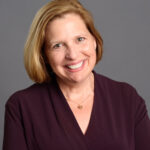 WASHINGTON, D.C.—The workforce shortage in rheumatology is a looming crisis that demands immediate attention. The ACR’s 2015 Workforce Study projected that by 2030, the supply of adult rheumatologists would dwindle by 31%, in contrast to the increase in demand by close to 138%.1 The situation is even worse for pediatric rheumatology and in rural and remote areas. Without interventions to mitigate this shortage, patient outcomes and access to care are at risk.
WASHINGTON, D.C.—The workforce shortage in rheumatology is a looming crisis that demands immediate attention. The ACR’s 2015 Workforce Study projected that by 2030, the supply of adult rheumatologists would dwindle by 31%, in contrast to the increase in demand by close to 138%.1 The situation is even worse for pediatric rheumatology and in rural and remote areas. Without interventions to mitigate this shortage, patient outcomes and access to care are at risk.
Kicked off by Vivekanand Tiwari, MBBS, a rheumatologist at Dartmouth Hitchcock Medical Center, Lebanon, N.H., and an assistant professor of medicine at Geisel School of Medicine, and with a panel discussion moderated by Daniel F. Battafarano, DO, a rheumatologist in San Antonio, Texas, this session, Tackling Workforce Shortages in Rheumatology, was “Born out of a deep concern for the well-being of the rheumatology workforce and the quality of care we provide to our patients.” The session brought together experts and rheumatology practitioners to identify the causes of burnout, share effective coping strategies and explore solutions to mitigate the workforce shortage.
Burnout

Dr. Calabrese
“Rheumatology has a manpower problem,” said Leonard H. Calabrese, DO, vice chair of the Cleveland Clinic’s Department of Rheumatic and Immunologic Diseases and director of the Cleveland Clinic’s RJ Fasenmyer Center for Clinical Immunology, Cleveland, and the session’s first speaker. He addressed the impact of burnout on the rheumatology workforce.
“Burnout is a poison to every element in the workforce equation—[sustaining, training and recruiting],” Dr. Calabrese said. “Burnout is a term of an occupational syndrome; it is not unique to medicine. … However, burnout in medicine has some primacy because it has an impact on the health and well-being of the population.”
Defining burnout, Dr. Calabrese said it has three components: emotional exhaustion, depersonalization and a low sense of accomplishment. “There’s an impulse to equate burnout with mental illness, but burnout is not equivalent to mental illness.
“What are the drivers of burnout? It has a personal element. … There’s also a systemic element,” he said, then addressed work-life balance, the transactional imbalance driven by the need to see more patients in less time (i.e., loss of autonomy) and the moral injury imposed by that imbalance.
Data on burnout in rheumatology do exist. Dr. Calabrese specifically mentioned two studies.2,3 A 2020 study found that 51% of attendees of a continuing medical education meeting met at least one domain of the Maslach Burnout Inventory, with dissatisfaction, lack of exercise and work hours as contributing factors. A 2023 study revealed that more than one-third (38.5%) of postgraduate year (PGY) 4 and 16.7% of PGY 5/6 fellows reported at least one symptom of burnout.”
Adult & Pediatric Clinicians & Mitigation Strategies

Dr. Jonas
Beth Jonas, MD, FACR, chief of the Division of Rheumatology, Allergy and Immunology and the Reeves Foundation Distinguished Professor of Medicine at the University of North Carolina, Chapel Hill, specifically addressed the workforce shortage in adult rheumatology. Colleen Cornell, MD, MPH, a pediatric rheumatologist at the University of Minnesota, Minneapolis, addressed the pediatric rheumatology workforce shortage. And Daniel Albert, MD, a rheumatologist at Dartmouth Hitchcock Medical Center, Etna, N.H., discussed strategies to mitigate burnout.
“Rheumatology is really, really popular, but every year, we leave 80 to 100 residents [seeking fellowships] on the field,” said Dr. Jonas. “We need more training programs.”
But training more rheumatologists won’t be enough to close the gap. “We aren’t going to train our way out of this problem,” said Dr. Jonas. We need resources to support the rheumatology career cycle, more advanced practice providers, more best practices to navigate the payer landscape and more innovative programs to help train primary care and other providers in rheumatology. A new ACR resource, Rheumatology for Primary Care, is a step in the right direction.
“We really need to address the factors that lead to burnout and possible early attrition from the workforce,” said Dr. Jonas.
We also need to address the factors that affect the financial health of rheumatology practices, she said.
She mentioned Workforce Expansion Grants being made available by the Rheumatology Research Foundation.
“I encourage you to think broadly with us, think creatively with us,” concluded Dr. Jonas, inviting members of the audience to help solve the rheumatology workforce crisis.
The provider gap is even worse in pediatrics. “Our target is one provider for every 100,000 children,” said Dr. Correll, but there are wide swaths of the country that don’t have pediatric rheumatology clinicians.
“Why would you want to train for three more years to make $100,000 less per year than an adult rheumatologist?” Dr. Correll asked. The key driver of lower pediatric rheumatology salaries is the patient population. Adult rheumatologists treat a significant number of Medicare patients, while pediatric rheumatologists treat a significant number of Medicaid patients. Medicaid reimbursement is about 30% lower than Medicare reimbursement for the same codes.
“I enjoy what I’m doing, and I look forward to going to clinic every day,” said Dr. Albert diving into a discussion of strategies to mitigate burnout.
Resilience programs are akin to blaming the victim, he said, declaring that rheumatologists are resilient.
His ideas?
- “If you are putting in pajama time” working on documentation, he said, “you need to stop.”
- “Answer in-basket queries very quickly,” he said. If something takes longer than a sentence or two, convert the response to a telemedicine visit and bill for it.
- Don’t cut the patient visit below 30 minutes.
- Schedule me time—at least an hour a day. Take vacations without EMRs.
- Don’t be held to market value on your salary. “Take a look at what locum tenens are being paid. … Don’t be bullied.”
In Sum
The rheumatology workforce issues won’t be resolved easily. The ACR’s Workforce Solutions Committee is continuing to work on solving this crisis.
The session will be available on demand to all registered ACR Convergence 2024 attendees through Oct. 10, 2025, by logging into the meeting website.
Keri Losavio is the staff editor of The Rheumatologist.
References
- Battafarano DF, Ditmyer M, Bolster MB, et al. 2015 American College of Rheumatology workforce study: Supply and demand projections of adult rheumatology workforce, 2015–2030. Arthritis Care Res (Hoboken). 2018 Apr;70(4):617–626.
- Tiwari V, Kavanaugh A, Martin G, Bergman M. High burden of burnout on rheumatology practitioners. J Rheumatol. 2020 Dec 1;47(12):1831–1834.
- McGoldrick J, Molina-Ochoa D, Schwab P, et al. An evaluation of burnout among US rheumatology fellows: A national survey. J Rheumatol. 2023 Sep;50(9):1185–1190.



